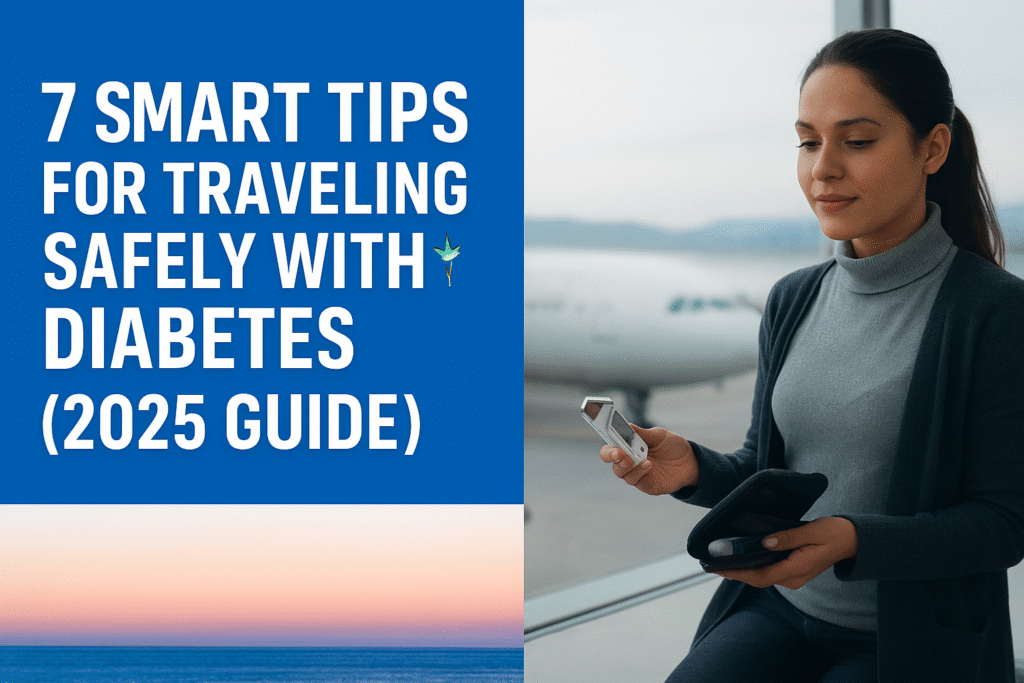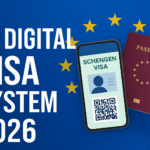Introduction: Why Traveling with Diabetes Needs Smart Planning
Travel opens up new worlds — but for those living with diabetes, it also brings unique challenges.
Whether it’s managing meal timing across time zones, ensuring insulin stays cool, or avoiding stress spikes, travel can quickly become overwhelming without a plan.
According to the International Diabetes Federation (IDF), over 540 million people worldwide live with diabetes — and more than 35% of them travel internationally each year. With the right preparation, people with diabetes can enjoy safe, stress-free adventures around the globe.
This guide breaks down 7 expert-backed, practical strategies for managing diabetes while traveling in 2025 — ensuring safety, freedom, and peace of mind.
💉 1. Plan Early — Consult Your Doctor Before You Fly
Before any trip, your first step should be a quick check-in with your healthcare provider.
Discuss your travel destination, time zones, and climate so they can adjust your medication schedule accordingly.
Ask your doctor for:
- A written medical letter explaining your diabetes type, medications, and insulin needs.
- Backup prescriptions (in case luggage gets lost).
- Recommendations for handling emergencies abroad.
👉 Pro tip: If traveling internationally, check airline and customs rules for carrying insulin, needles, and glucometers.
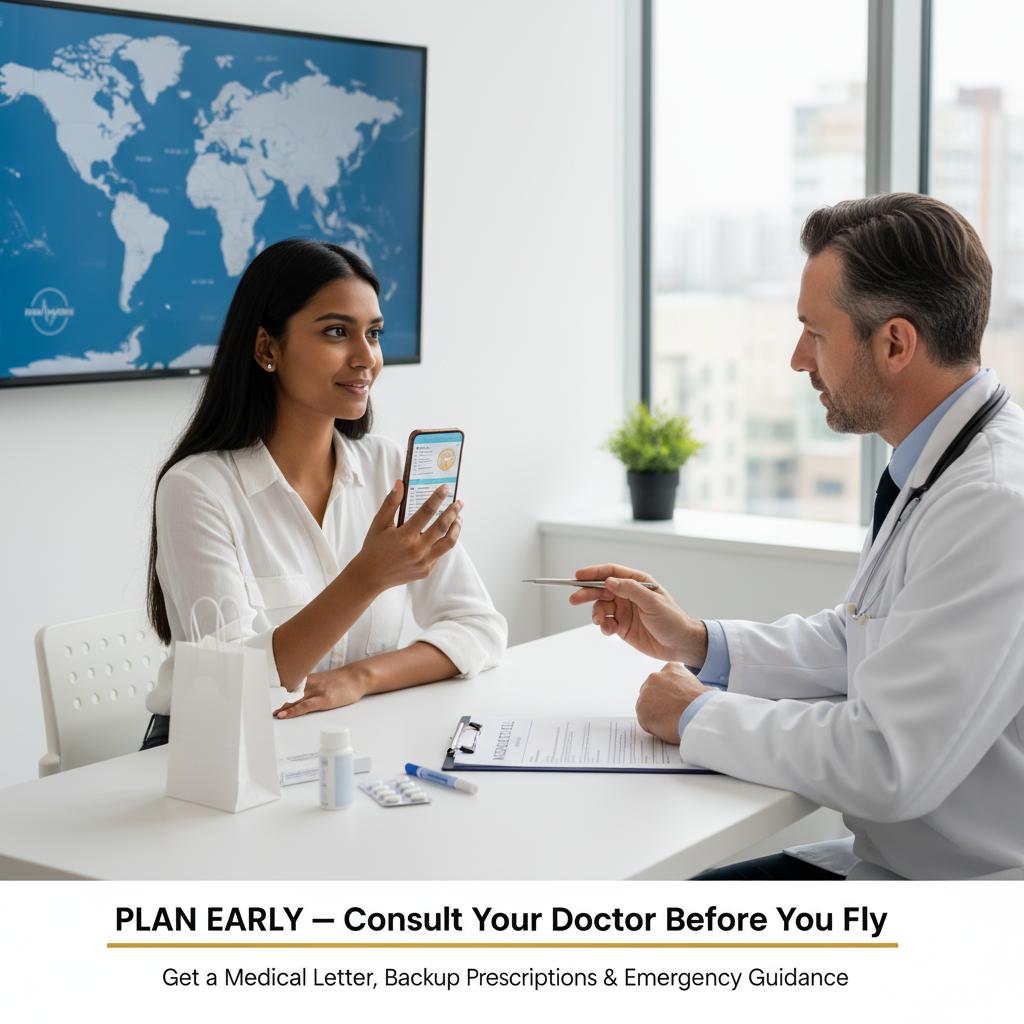
🕒 2. Manage Time Zones & Insulin Timing
Changing time zones can disrupt your medication routine — and that’s one of the biggest risks for travelers with diabetes.
Here’s how to stay consistent:
- Adjust your insulin schedule gradually — shift it by 30–60 minutes each day before departure.
- Use diabetes-friendly apps like MySugr or One Drop to track blood glucose trends in different zones.
- For long-haul flights, set multiple alarms or smartwatch reminders.
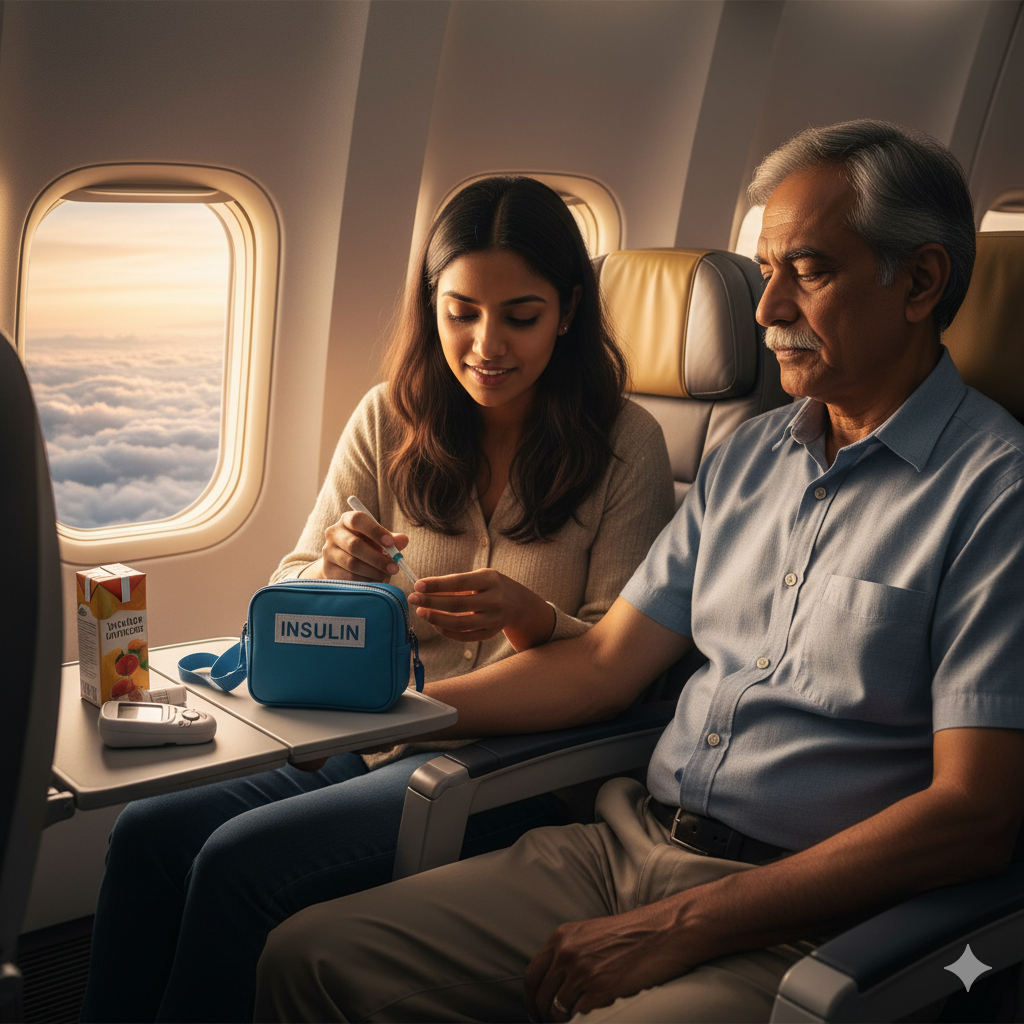
✈️ Example:
If you’re flying from Pakistan to London (5-hour time difference), plan to adjust your insulin timing 1 hour earlier each day for 5 days before departure.
🧊 3. Keep Insulin Cool — Never Store It in Checked Luggage
Insulin is temperature-sensitive — extreme heat or cold can reduce its effectiveness.
Storage Tips:
- Always carry insulin in hand luggage (not in the cargo hold).
- Use insulated travel pouches or cooling wallets like Frio Bags.
- Keep insulin away from direct sunlight and extreme cold on flights.
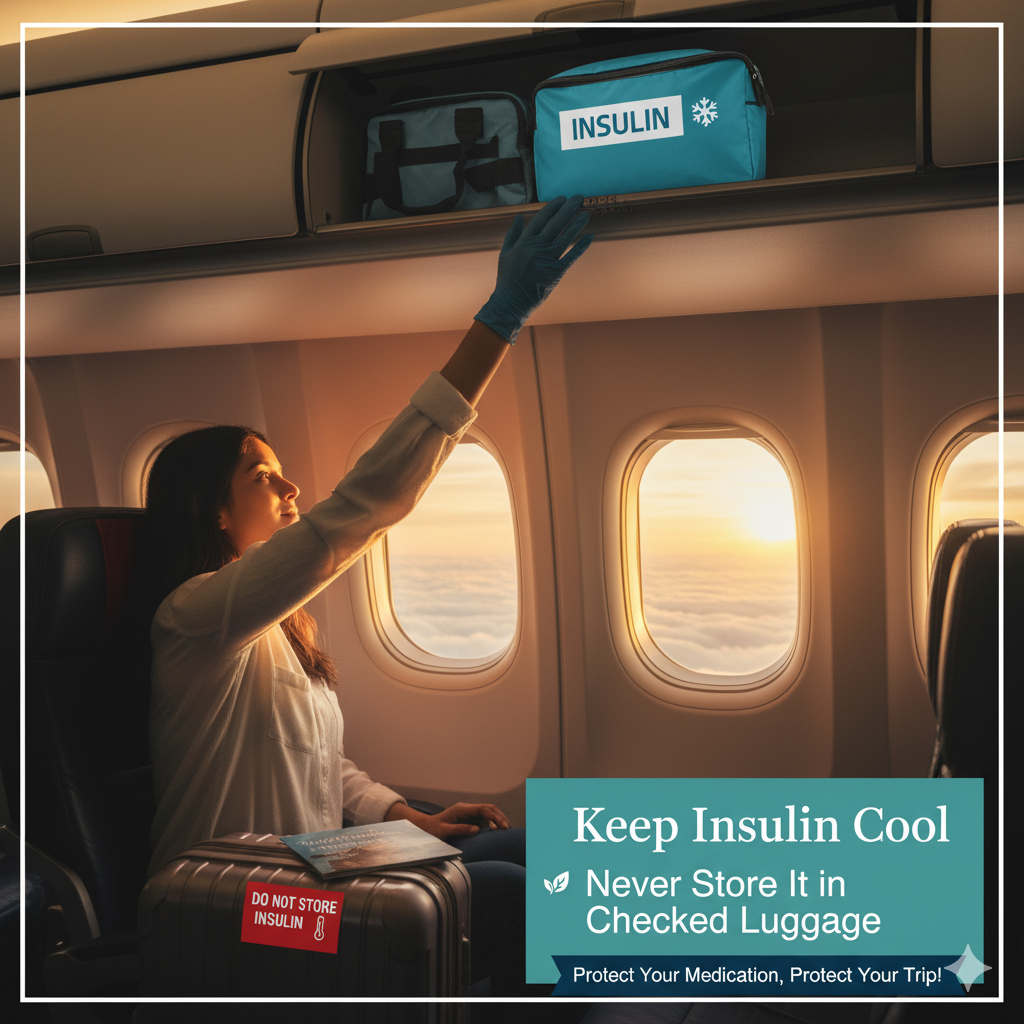
If you’re staying in a hotel, request a mini-fridge or use ice packs to maintain optimal temperature (2–8°C).
🍱 4. Pack Smart — Travel-Friendly Snacks & Supplies
Food unpredictability is one of the biggest anxiety triggers for diabetic travelers. Always pack a “diabetes emergency kit” to handle low or high sugar levels while on the move.
Essentials:
- Glucose tablets or small candy
- Protein bars, nuts, or trail mix
- Reusable water bottle
- Backup insulin, test strips, and glucometer batteries
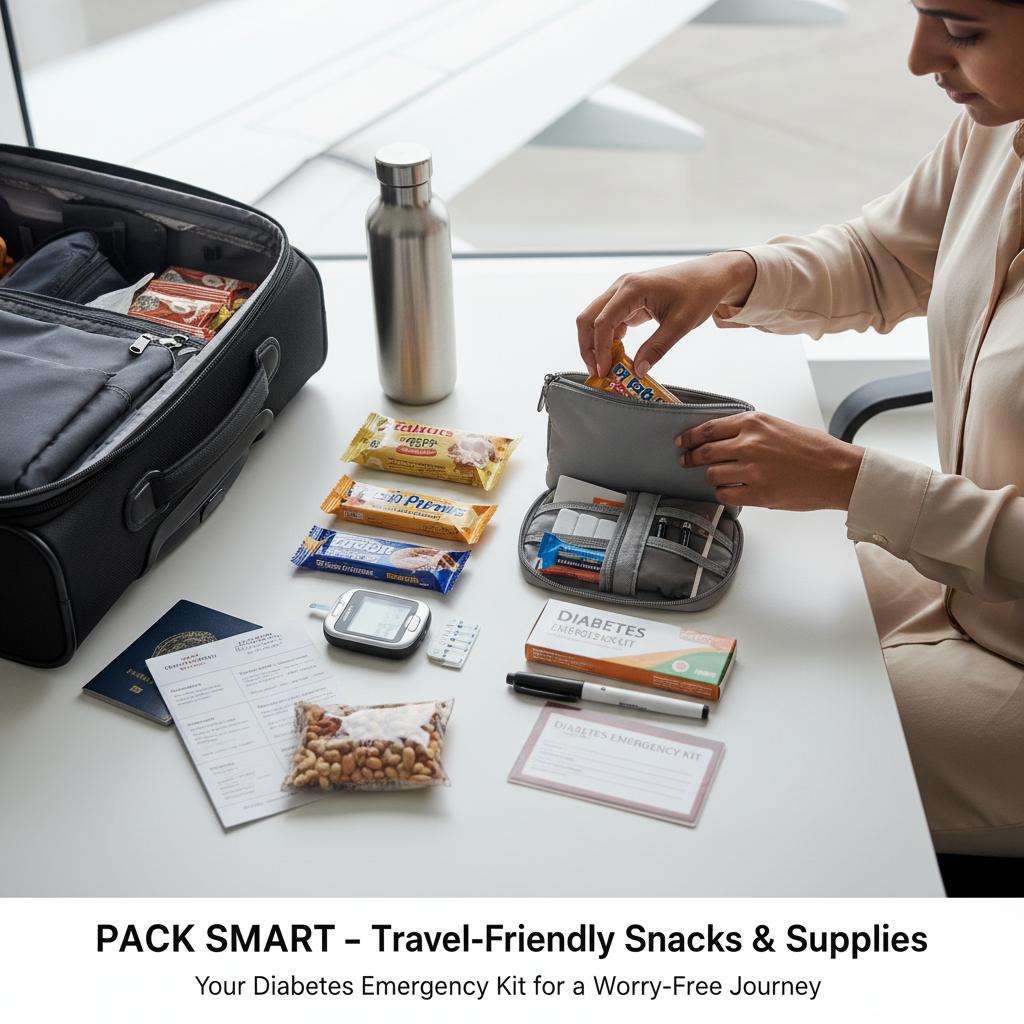
🧳 Tip: Always carry twice the amount of supplies you think you’ll need — in separate bags. One goes in your carry-on, one in your suitcase.
🌍 5. Stay Active, But Don’t Overdo It
New destinations often inspire extra walking, hiking, and exploration. While physical activity is great for controlling glucose, too much exertion without proper fuel can lead to hypoglycemia.
To stay balanced:
- Track your steps and glucose together using fitness watches.
- Carry a small snack every time you go sightseeing.
- Take breaks in shaded areas to avoid dehydration.
💡 Did you know? Mild exercise during travel can actually help improve insulin sensitivity — as long as you maintain regular meals and hydration.
😌 6. Minimize Travel Stress — Your Blood Sugar Will Thank You
Stress and anxiety can spike blood sugar levels. Travel, while exciting, can bring unexpected challenges: delayed flights, crowded airports, or missing luggage.

How to stay calm:
- Practice deep breathing (inhale 4s, hold 4s, exhale 6s).
- Use meditation apps like Calm or Headspace.
- Avoid caffeine overload — it can trigger anxiety and dehydration.
🌤️ Mindful travel tip: Choose eco-lodges, nature stays, or slow travel routes that promote relaxation and connection rather than rush.
🩹 7. Keep a “Diabetes Travel Card” & Emergency Contacts Handy
In case of emergencies, clear communication is key — especially if you’re in a foreign country.
Your diabetes card should include:
- Your name, diagnosis, and medication details
- Doctor’s contact info
- Local emergency numbers
- Translation in the local language
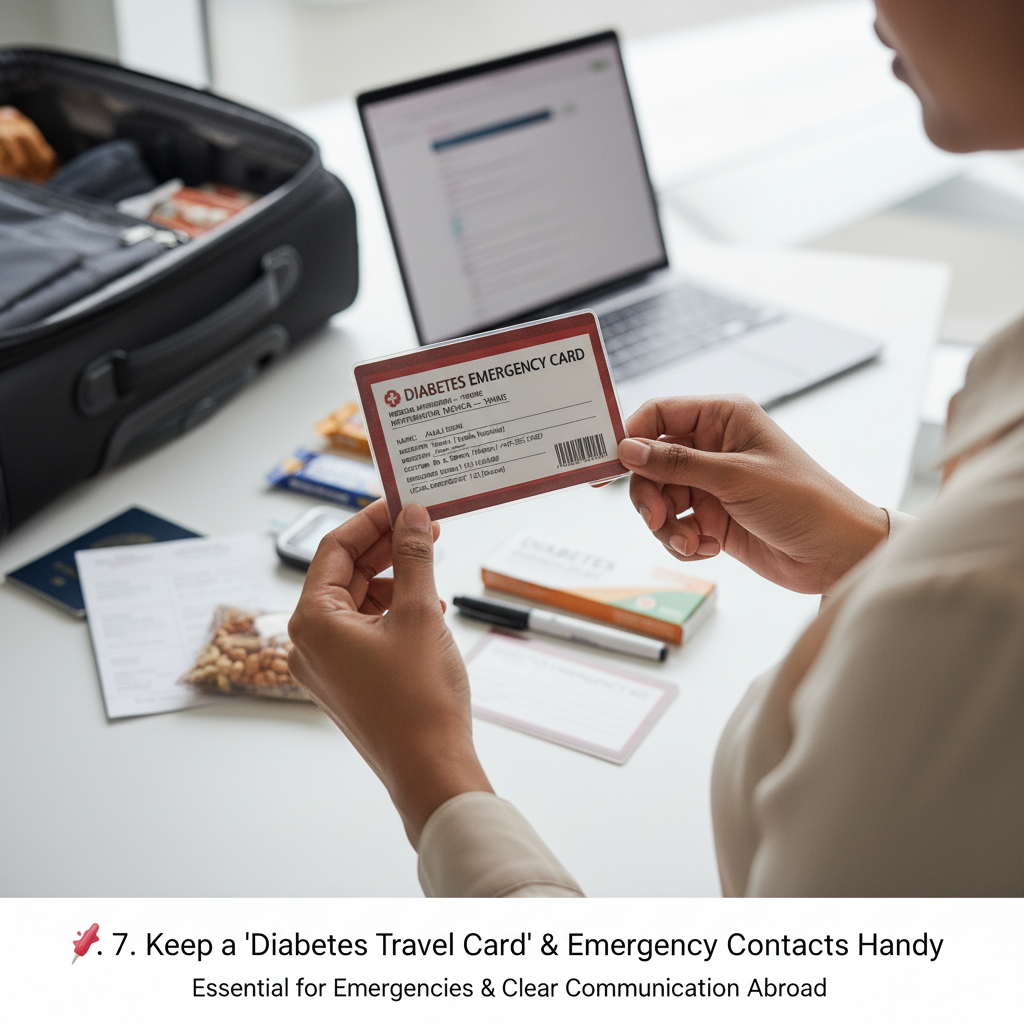
Many travelers also wear medical alert bracelets — a small detail that could save your life in an emergency.
🧘 When to Seek Medical Help
Even with preparation, some symptoms require professional help:
- Persistent high/low blood sugar
- Signs of dehydration or infection
- Vision changes or dizziness
Use telemedicine platforms like Teladoc Health or Doctor Anywhere to consult with specialists remotely — especially helpful for long stays abroad.
🌱 Sustainable Travel & Diabetes Health
Sustainable travel isn’t just good for the planet — it’s also good for your body.
Walking through local markets, staying in eco-lodges, and eating fresh, whole foods can reduce stress and promote better glucose control.
Examples:
- Mediterranean destinations like Greece and Italy emphasize whole foods and balanced diets.
- Asian wellness retreats offer mindfulness and yoga, proven to stabilize mood and reduce cortisol.
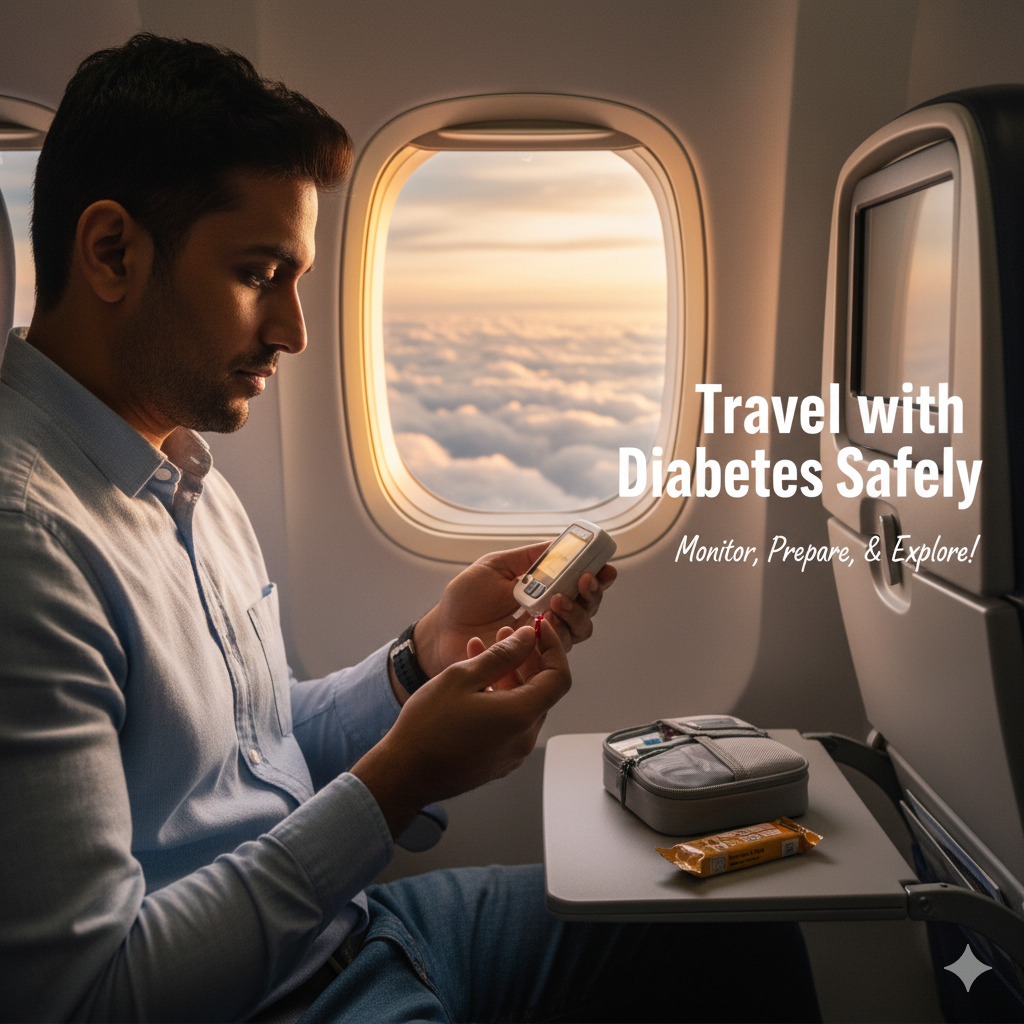
❓FAQs
Q: Is it safe to travel with diabetes?
Yes! With planning, diabetes should never stop you from exploring the world. Always carry your medications, doctor’s note, and snacks.
Q: How to store insulin while traveling?
Use insulated pouches or cooling wallets; avoid direct sunlight or checked baggage.
Q: Can I travel by air with insulin pens?
Yes. Airlines allow insulin and needles if properly labeled and stored.
Q: What if I forget to adjust my insulin timing?
Monitor your glucose frequently and adjust your dosage after consulting your doctor remotely.
Traveler Advice: Travel with Freedom, Not Fear
Diabetes doesn’t define your journey — preparation does.
By following these seven strategies, you can explore confidently, stay balanced, and focus on what truly matters — discovering the world with peace of mind.
Remember: travel is not about escaping your condition, but about embracing life fully despite it.
✨ If this guide helped, share it with another traveler managing diabetes. Together, we can inspire safer, healthier adventures.
Related Topics: Managing Travel Stress, Eco-Friendly Travel for Better Health
Source:
| Centers for Disease Control and Prevention (CDC): Diabetes and Travel | https://www.cdc.gov/diabetes/living-with/travel.html | Official CDC guide on travel safety for people with diabetes |
| American Diabetes Association: Travel Tips | https://diabetes.org/health-wellness/healthy-living/travel-tips |

